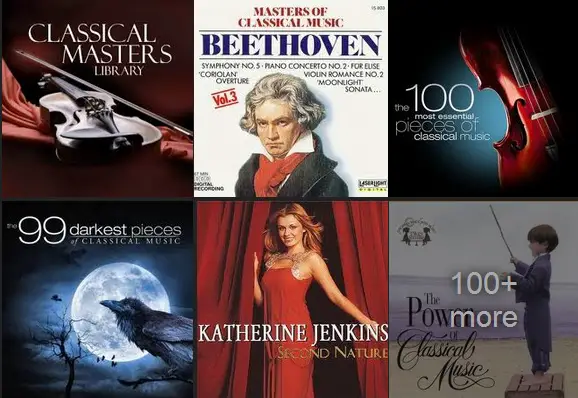
Best Piano Concertos reviewed. A piano concerto is a composition in which a solo piano (or harpsichord) is accompanied by a large ensemble of other instruments (usually a full orchestra).
Best Concerto For Piano
Here we take a look at the greatest & the most popular piano concerti of all time, based on factors such as musical artistry, technical artistry, pianistic power, balance between piano and orchestra, and historical influence.
Read: What is a oncerto in classical music?.
Mozart Piano Concertos
It can be said that piano concertos are the invention of Wolfgang Amadeus Mozart. Before he emerged, there were just a few concertos written for fortepiano or harpsichord. It’s also observed that the concertos of that time didn’t possess the same high artistic qualities of the Mozart piano concertos.
In his lifespan, Wolfgang Amadeus Mozart wrote 27 concertos for piano and orchestra. For a long time, these remain neglected, but today are recognized as among his greatest achievements. Mozart’s concerti for solo piano and orchestra were like ‘standards’ that were followed by other composers of his as well as the following generations. When Beethoven first came to Vienna (shortly after Mozart’s death), Mozart’s concerti featured prominently in his concert repertoire.
Mozart’s last 10 piano concertos are considered masterpieces, considered among the greatest human achievements. However, it doesn’t mean that his earlier 17 concerto were average. Its the media that tells us that his last 10 concertos are the best. You may just pick any Mozart piano concerto, even the ones that he composed as a boy, and you will hear the stamp of the master on it.
Almost all of Mozart’s concertos were written after he moved to Vienna, to be performed at his own subscription concert series there. The concertos Nos. 14-25 were written in a period of creativity (lasting from February 1784 to December 1786) that has certainly never been surpassed in piano concerto production.
The early Mozart piano concertos are numbered one to four. The very first one was written on April 1767. These works for the most part were arrangements of the works of other writers. The other three concertos were written in the months of June and July of the same year. His concerto number five, written in December of 1773 was considered his first real work toward this said genre.
Useful Links
Wolfgang Amadeus Mozart | Piano concertos (2 Hours – Non Stop Classical Music )
Watch (Hear rather): Wolfgang Amadeus Mozart’s Piano concertos
Concepts of a Mozart Piano Concerto
Mozart’s conception of the piano concerto was rather unique. More often than not, there was the question of how to deal with the thematic material via piano and orchestra. Another question that haunted composers of his day was determining a balance or middle ground between piano solos and the symphony. Mozart’s solutions to the said musical traps are quite varied especially in his mature series. It is observed that the way he handled such perplexities were quite complex.
Possible Contemporaries
However, we should also note that J. S. Bach wrote excellent harpsichord concertos, but we can almost be sure that Mozart didn’t come to know any of them. Carl Philipp Emanuel also wrote more than 50 similar concertos that Mozart may have probably learned of. However, these harpsichord concertos are way different from Mozart’s works that it is hardly believable that he drew any principles or inspiration from them.
Classical Work or Pop Music
Today we consider Mozart piano concertos to be classic works. However, that wasn’t how his works were perceived by his immediate contemporaries. To them, Mozart’s pieces were like pop music to us today. Most of them thought of the works as something that can be enjoyed for the meantime and to only be replaced by something newer or more upbeat. In spite of this low regard, collectors and connoisseurs recognized the extraordinary qualities of the Mozart piano concertos. This was an implicit approval of Mozart’s works and genius. On an interesting note, of all the many symphonies that Mozart wrote, only three were published in his lifetime. However, a third of his original concertos attained quite a distinction.
Beethoven Piano Concertos
One of the most famous classical composers of all time, checkout Beethoven Piano Concertos here.
Towards the end of the 19th century, the concerto genre had reached a flourishing stage after Mozart had thoroughly contributed to the foundation of the genre.

In the first concerts, as well as in the other genres (symphonies, sonatas, quartets) Mozart’ and Haydn’s influence is evident. The characteristics of Beethoven’s sensibility were to become evident starting with his third piano concerto.
In the following concerts, a new relation is established between the piano as unaccompanied instrument and the orchestra that covers a greater role, not being reduced to the simple function of accompanying the soloist.
- Piano Concerto no. 1 in C major op. 15
- Piano Concerto no. 2 in B flat major op. 19
- Piano Concerto no. 3 in C minor op. 37
- Piano Concerto no. 4 in G major op. 58
- Piano Concerto no. 5 “Emperor” in E flat major op. 73
- Fantasy for piano, chorus and orchestra in C minor op. 80
- Violin Concerto in D major op. 61
- Chamomile for violin and orchestra in G major op. 40
- Chamomile for violin and orchestra in F major op. 50
- Triple Concerto for piano, violin and cello in C major op. 56
At the age of 14, in 1784, Beethoven tries to write a piano concerto in E flat major, of which only the piano part was kept. In 1790 he tries to compose a new concerto, this time in D major, of which only the first part remained. The first instrumental concerto composition was made in 1795 when he wrote The piano concerto in B flat major op. 19, about the same time he composed The piano concerto in C major op. 15 and The rondo for piano and orchestra.
Concerto no. 3 in C minor for piano and orchestra was finalized in 1800 and in 1802 he composed the two chamomiles for violin and orchestra: Chamomile for violin and orchestra in G major op. 40 and Chamomile for violin and orchestra in F major op. 50.
In 1801 he drafts The Triple Concerto for piano, violin and cello in C major op. 56 that he will finish only in 1805. In 1806 he writes The Piano Concerto no. 4 in G major op. 58, in 1808 he composes The Fantasy for piano, chorus and orchestra in C minor op. 80 and in 1809 he writes his last concerto for piano, The Piano Concerto no. 5 “The Imperial” in E flat major op. 73.
Source: all-about-beethoven.com
Tchaikovsky Piano Concerto
Tchaikovsky: Piano Concerto 1, 2 & 3, including Sheet Music. Take a look at the Russian composers best Concertos.
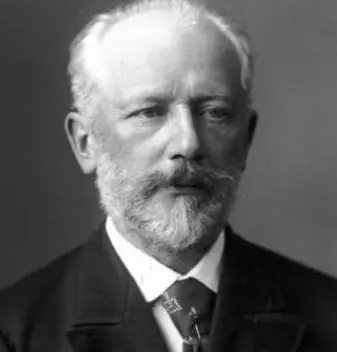
Pyotr Ilyich Tchaikovsky is an extremely popular Russian-born classical composer, whose works included symphonies, concertos, operas, ballets, and chamber music. Here we take a look at his popular piano concertos.
Tchaikovsky composed three Piano concertos, of which, Tchaikovsky Piano Concerto no. 1 is world-famous (especially its rich chordal opening).
Having said that, even the other ones are quite exciting. Tchaikovsky’s piano concertos are known for explosive orchestration, and there’s also a hint of Russian folk tunes in the compositions.
Let’s take a look at them…
Also Read: What is a Piano concerto?
Tchaikovsky Piano Concerto 1
There’s an interesting background/history about the Tchaikovsky Piano Concerto 1 (has a very catchy opening melody).
Tchaikovsky composed his first piano concerto somewhere between November 1874 and February 1875, and its said that the melody of the composition was inspired by a folk melody, which a beggar was singing on the streets in Ukraine, and Tchaikovsky heard it.
But here’s the more interesting part. Once the composition was completed, Tchaikvosky was looking for a top-caliber pianist who could promote his composition.
Tchaikvosky performed the piece for Nikolai Rubinstein, who was a famous Russian pianist of the day. Because Rubinstein was a famous piano player, Tchaikovksy’s thought he could persuade Rubinstein to perform the premiere (assuming if he liked it), which would boost the popularity of the piano concerto.
However, that was not to be!
Rubinstein was highly critical of the classical composition, even calling it “worthless and unplayable”. He asked Tchaikovsky to rewrite large parts of the concerto, and luckily, the composer refused.
Tchaikovsky then asked German pianist Hans Von Bulow to perform the premiere. Von Bulow was giving a tour in America at that time, so the first performance was held in Boston on October 25, 1875.
And guess what, the concerto was a massive success there!
Sine then, Tchaikovsky’s first Piano Concerto has turned out to be his best known works.
Piano Concerto No. 1 in B-flat minor, Op. 23 (1874-5)
Tchaikovsky Piano Concerto 2
Tchaikovsky’s Piano Concerto 2 took a very long time to complete, but that was deliberately done. Tchaikovsky was in no hurry to complete this work.
However this time, once the 2nd Piano Concerto was completely written, Nikolai Rubinstein (who had refused to perform the first concerto) pleaded with Tchaikovsky to let him perform the premiere (he wanted to patch up with Tchaikovsky after being critical of the first concerto). Tchaikovsky agreed, but unfortunately, Rubinstein passed away few months before the premiere.
Tchaikovsky Piano Concerto 3
This one is the least famous of all of Tchaikovsky’s piano concertos; this one is a bit quirky too. But then its because Tchaikovsky never finished it!
Tchaikovsky’s piano concerto 3 has only one movement (piano concertos usually have 3 movements). Its believed that Tchaikovsky chopped out two entire movements because the piece was growing way too long.
Sadly, Tchaikovsky died before the premiere of his 3rd Piano Concerto, which was held in Saint Petersburg.
Piano Concerto No. 3 in E-flat major, Op. posth. 75 (1893)
Rachmaninov Piano Concertos
Known for composing some of the most popular and technically challenging pieces, checkout Rachmaninov Piano Concertos here.
Rachmaninov Piano Concerto: List of the best ones. Here’s a quick guide to the greatest recordings of Rachmaninov’s much-loved concerto.
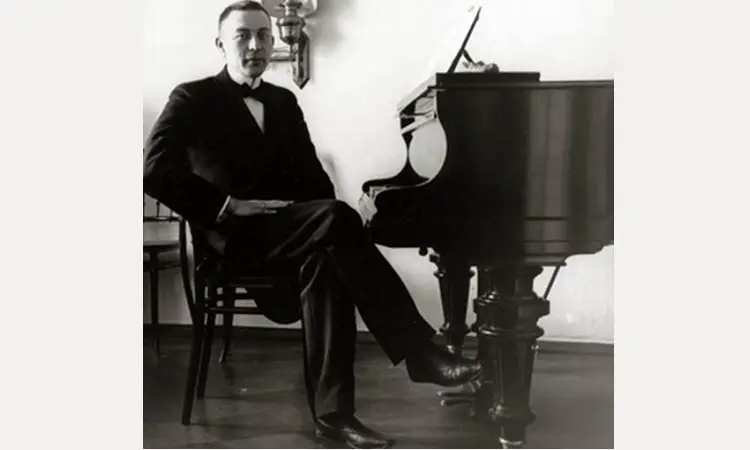
When Rachmaninov died, several music critics said that his music would soon be forgotten as most of his works were second rate. However, they all have been proved wrong. Rachmaninov piano concerto 2 established his reputation and remains popular even today, since it was first performed.
Rachmaninov piano concerto 2 is a truly romantic piece of music, and definitely one of the greatest piano concerto ever written. Lets take a look at the best Rachmaninov Piano Concertos.
Piano Concerto No. 2 in C minor, Op. 18
The Piano Concerto No. 2 in C minor Op. 18, is a concerto for piano and orchestra composed by Sergei Rachmaninoff.
Concerto for piano and orchestra, this is one of Rachmaninoff’s most popular pieces, and established his fame as a concerto composer. The Piano Concerto No. 2 in C minor, Op. 18, is a concerto for piano and orchestra composed by Sergei Rachmaninoff between the autumn of 1900 and April 1901.
The second and third movements were first performed with the composer as soloist on 2 December 1900. The complete work was premiered, again with the composer as soloist, on 9 November 1901, with his cousin Alexander Siloti conducting.
This is one of the more popular pieces in classical music.
Written between 1900 and 1901, Rachmaninoff slogged for several hours a day on this composition, for more than half a year. It had been the first large work he had created since his poorly received first piano concerto four years earlier.
The result, however, remains one of Rachmaninoff’s most well-known and beloved works that is a pillar in today’s piano repertoire. The concerto was first performed in its entirety on October 27, 1901 in Moscow.
Watch Sergei Rachmaninoff (1873-1943) himself playing the first movement (Moderato) from his second piano concerto.
Watch Anna Fedorova (an exceptional pianist) playing this masterpiece on the piano. Most women find it difficult to play this physically because due the the enormous size of Rachmaninoff’s hands, but she does play it quite well (highlights the importance of having good technique).
- [easyazon_link identifier=”B00000427L” locale=”US” tag=”keytarhq04-20″]Buy Rachmaninov: Piano Concertos 1-4 on Amazon[/easyazon_link] (Andre Previn (Conductor), London Symphony Orch. (Orchestra))
Piano Concerto No. 3 in D minor, Op. 30
This one has the reputation of being one of the most technically challenging piano concertos in the standard classical repertoire.
Watch: Sergei Rachmaninoff plays his Piano Concerto No. 2 (the video allegedly show Rachmaninoff himself recorded by RCA in 1929)
Many believe that Rachmaninoff could play his concertos much faster because of his virtuosity (and his longer fingers).
Popular Products: Buying Links
Rachmaninoff Plays Rachmaninoff: The 4 Piano Concertos
[easyazon_link keywords=”Rachmaninov Piano Concertos” locale=”US” tag=”keytarhq04-20″]
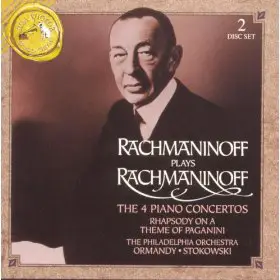 [/easyazon_link]
[/easyazon_link]2CD Rachmaninoff; Philadelphia Orchestra
Record Label: Rca Red Seal
Its an honor in this age to be able to hear the composer and pianist Sergei Rachmaninoff perform his own music as he intended.
Regarding the audio quality, the ear adjusts to the sound quality anyways, and considering that these are older recordings, the audio quality is remarkably clear.
Buy Rachmaninov Piano Concertos here.
- [easyazon_link keywords=”Rachmaninov Piano Concertos” locale=”US” tag=”keytarhq04-20″]Rachmaninov Piano Concertos[/easyazon_link]
More Popular Piano Concertos in A Minor
Harpsichord Concerto No. 1, BWV 1052, J. S. Bach
Concerto in A minor, Op. 16, Edvard Grieg
Concerto in A minor, Op. 54, Robert Schumann
No. 2, B-flat Major, Op. 83, Johannes Brahms
Edvard Grieg – Piano Concerto in A minor
The Piano Concerto in A minor, Op. 16, was composed by Edvard Grieg (1843–1907) in 1868, and its the only concerto that Grieg completed. Its one of the most popular piano concerti.
Edvard Grieg – Piano Concerto in A minor Op. 16 (complete)
Schumann – Piano Concerto in A Minor
This one is a popular Romantic concerto, completed in 1845, by Robert Schumann. Its believed that the work may have been used as a model by Edvard Grieg to compose his own Piano Concerto, also in A minor. Besides this, Schumann has written few other popular pieces for piano and orchestra.
Schumann – Piano Concerto in A Minor
Felix Mendelssohn – Piano Concerto in A Minor
Felix Mendelssohn’s Concerto in A Minor, the product of a fertile 13-year-old mind, is so generally unknown that most references — especially older ones — refer to the man as having composed only two concertos for the instrument, the Concerto No. 1 in G minor of 1831 and the Concerto No. 2 in D minor of 1837 (as you can see, the A minor Concerto has never even earned its own number, as it was absent from the scene when numbers were allotted). It was composed during the spring of 1822, in between the first and second batches of string symphonies, and can be reckoned a musical melting-pot of eighteenth-century and early nineteenth-century methods and means: Haydn meets Hummel, with a just a hint of Beethoven thrown in for good measure, though it seems that the teenage Mendelssohn wasn’t yet quite sure what to do with the assertive Bonn-born composer’s music. Read more…
More Piano Concertos
Brahms: The Piano Concertos; Fantasia
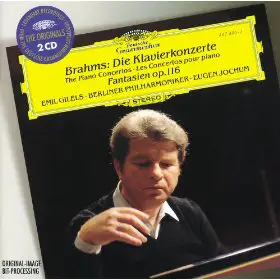 CD Emil Gilels, Berliner Philharmoniker, Eugen JochumRecord Label: Deutsche Grammophon
CD Emil Gilels, Berliner Philharmoniker, Eugen JochumRecord Label: Deutsche Grammophon
These performances mount the only serious competition as a complete set to the Leon Fleisher/George Szell versions on Sony Classical.
Emil Gilels was an extraordinary virtuoso who decided to place his technical wizardry in the service of the most disciplined and demanding classical masterpieces. No piano concertos live up to this description more than the two by Brahms. Himself a pianist, Brahms placed every purely musical stumbling block that he could in front of the soloist–only audiences never notice because there’s no gratuitous display at all. A performer who has not mastered these pieces doesn’t necessarily miss notes; he or she just bores everyone to tears.
Well, Gilels is never dull, and neither is Eugen Jochum, whose spontaneous-sounding yet sensitive accompaniments support his soloist every step of the way.
- [easyazon_link identifier=”B000001GQY” locale=”US” tag=”keytarhq04-20″]Buy on Amazon[/easyazon_link] | Buy on iTunes
What is Piano Concerto?
 A piano concerto is a concerto written only for the piano (solo piano or harpsichord), but accompanied by an orchestra or other large ensemble (usually a full orchestra).
A piano concerto is a concerto written only for the piano (solo piano or harpsichord), but accompanied by an orchestra or other large ensemble (usually a full orchestra).
Piano concerti (plural) were common during the time of Johann Sebastian Bach. Its also quite common to play Bach’s harpsichord concerti on the piano.
KeytarHQ editorial team includes musicians who write and review products for pianists, keyboardists, guitarists & other musicians. KeytarHQ is the best online resource for information on keyboards, pianos, synths, keytars, guitars and music gear for musicians of all abilities, ages and interests.



Leave a Reply